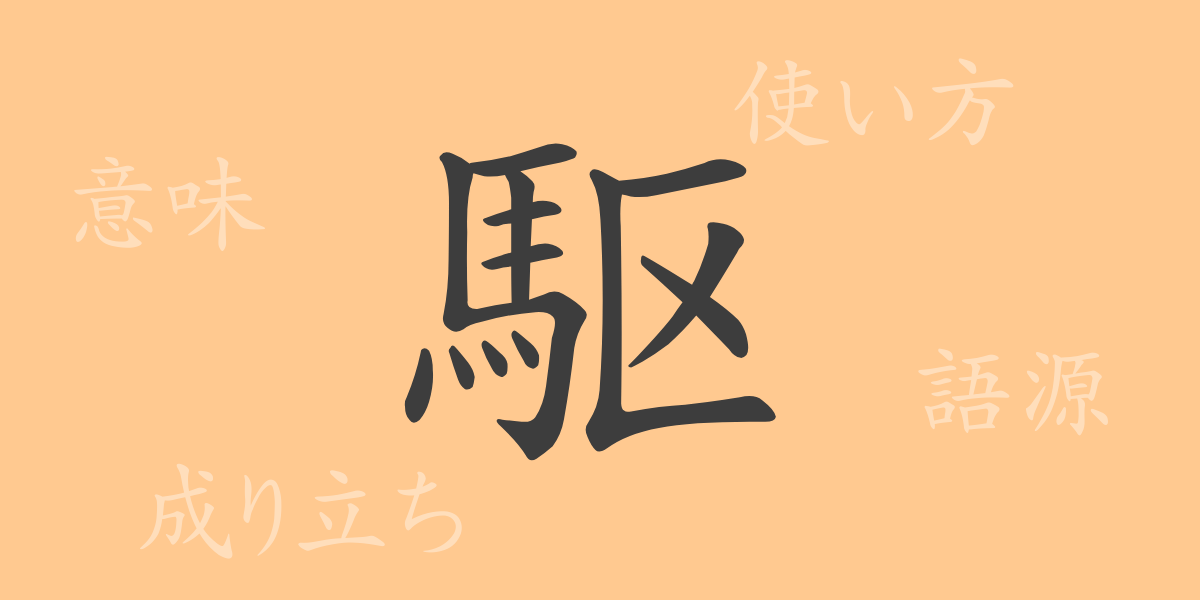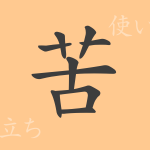The Japanese language contains numerous kanji, each with its own unique history and meaning. In this article, we shine a spotlight on the commonly used kanji “駆(く)” and explore its origins and modern usage. Derived from the imagery of driving animals, particularly horses, how is this kanji used in language, and what impact does it have? We hope this exploration of the world of the kanji “駆(く)” will be enlightening for our readers.
Origin of 駆(く) (Etymology)
The kanji “駆(く)” was created in ancient China to describe the act of driving horses forward. Its structure combines the radical for “horse” (馬) with the character “区(く)” which denotes action or movement. This combination conveys the meaning of “driving horses,” and it has come to embody a sense of vigorous motion and urgency.
Meaning and Usage of 駆(く)
The kanji “駆(く)” primarily means “to drive” or “to hasten.” It also extends to meanings like “to exert fully” and “to utilize.” Common usages include phrases like “馬を駆(く)る” (to drive a horse), “駆(か)ける” (to run), and “駆(か)け巡(めぐ)る” (to run around). In contemporary contexts, it is often used metaphorically, such as in “情熱を駆(か)る” (driven by passion) and “技術を駆使(くし)する” (to utilize technology).
Readings, Stroke Count, and Radical of 駆(く)
Here are some basic details about the kanji “駆(く)”:
- Readings: On’yomi (Chinese reading) – く; Kun’yomi (Japanese reading) – か・ける
- Stroke count: 15 strokes
- Radical: 馬(うま) (horse), categorizing it among kanji related to animals
Idioms, Phrases, and Proverbs Using 駆(く)
There are many idioms, phrases, and proverbs that include the kanji “駆(く)”. Here are a few examples:
- 駆逐(くちく) – To drive away or eliminate, often used when thoroughly removing something unwanted.
- 駆け引き(かけひき) – Tactics or strategy in negotiations or competitions.
- 一駆(いっく) – To dash forward at once or to lead in a competition.
- 駆け落ち(かけおち) – Eloping, often depicted in historical stories where lovers run away together.
Conclusion on 駆(く)
The kanji “駆(く)” has been used to symbolize motion and vigor from its origins to the present day. Frequently appearing in daily language, it conveys an active and dynamic image. By understanding the history and meaning behind each kanji, including “駆(く),” we can gain a richer appreciation of the Japanese language. We hope this article helps deepen your understanding of the profound meanings embedded in each kanji character.

























